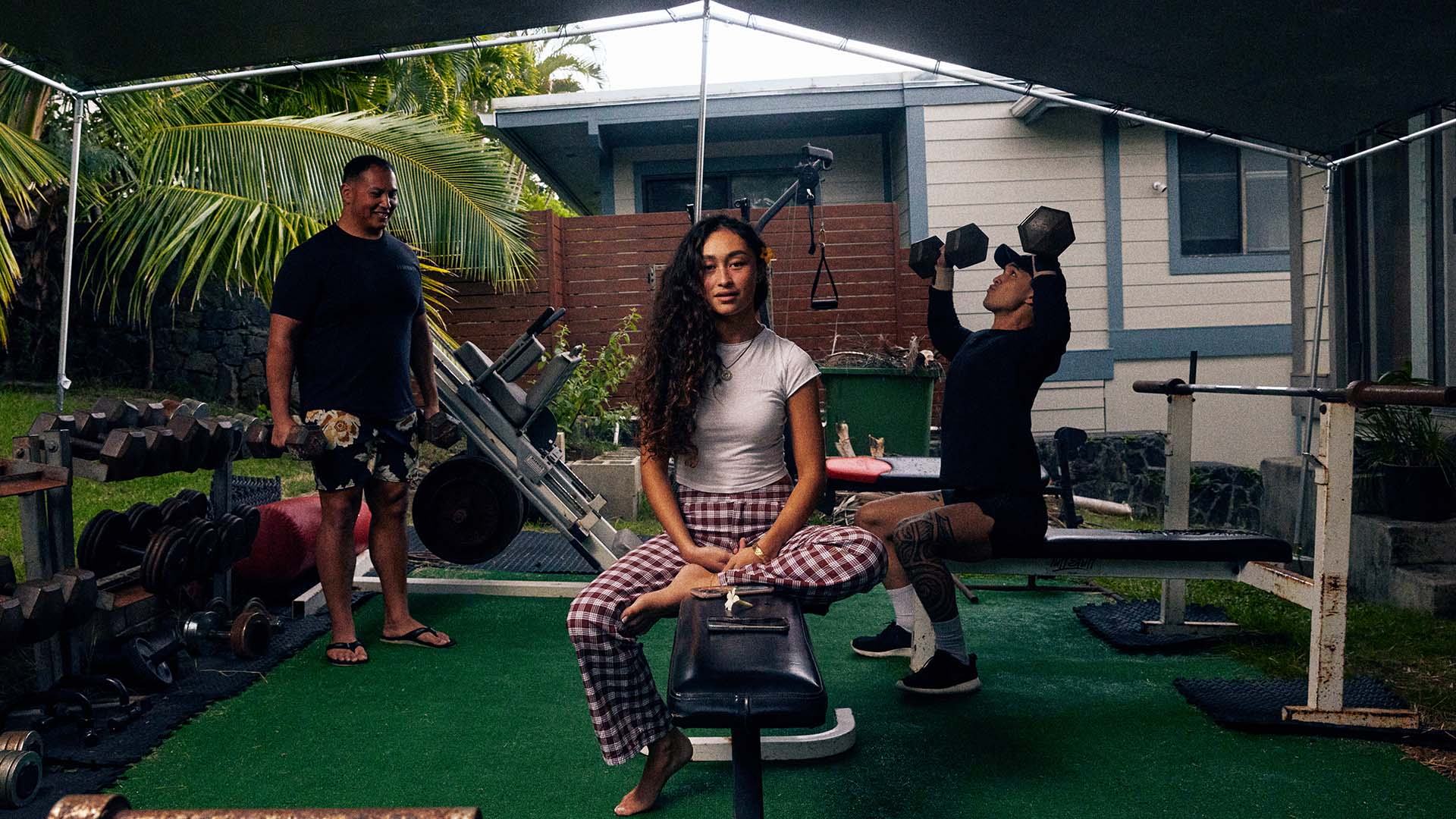What’s on the minds of the youngest generation in the local workforce who can barely afford Hawai’i?
Images by Desmond Centro, John Hook, Shandelle Nakanelua, Taylor Niimoto, and Erica Taniguchi
With its warm weather and beautiful beaches, Hawai‘i is heralded in the public imagination as a so-called tropical paradise. But, it’s no secret that these islands are also one of the most expensive places to live in the United States. Multi-pronged factors ranging from the state’s reliance on imported goods to strict zoning regulations all contribute to the hefty price tag. In May 2023, the median cost of a home on O‘ahu rose to $1,109,000; the state’s median household income hovers at $83,000, according to a study with data obtained from the 2020 American Community Survey.
Enter Generation Z.
Born between 1997 and 2012, they are the latest batch of emerging adults, the eldest being approximately 27 years old. Their median annual earnings in Hawai‘i land at $37,770. Not only do Gen Z-ers living across the islands have to face the challenge of keeping up with its cost of living, but they also have to deal with the ever-growing economic downturn that began during the pandemic (supply-chain driven inflation being one of the contributing factors to the steady increase in the cost of living around the nation). As Hawai‘i navigates this post-pandemic landscape, addressing housing affordability is crucial to ensuring a sustainable future for the state’s younger generations. Flux spoke with Gen Z-ers from a range of backgrounds and occupations across the islands to learn more about their living situations and direct experiences with the current housing landscape. Nearly all of them are renting, most are just scraping by. Collectively they portray their generation’s current-term strategies and solutions to retain decent accommodations in a scarce affordable housing market, along with their hopes and anxieties about future homeownership.—Kaia Stallings
Hailey Medlock
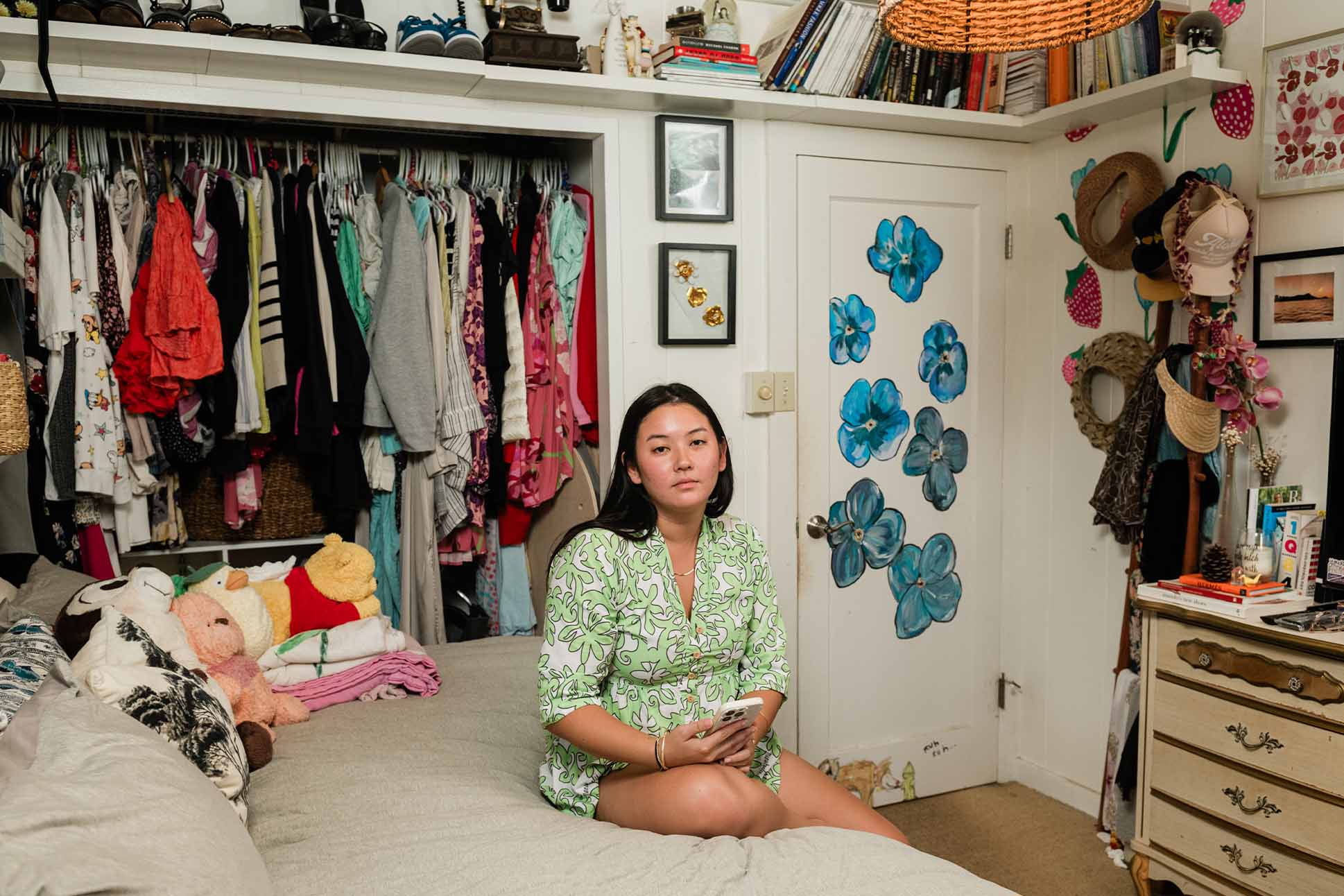
21-year-old student and swimwear designer
Spends 0% on rent
Resides in ʻAiea, Oʻahu
Medlock lives with her parents in their home. “I also work part time, but my parents understand that at the end of the day what I make working part-time and what I make with my business is what I need to be putting away and saving to actually move out. I’m really lucky that they don’t charge me rent,” she says. “Lately, I’ve been going on Zillow and not only has the base cost of owning an apartment in Honolulu gone way up, but rent has also gone way up, too. Just seeing how much the economy really increases [the cost of housing] in a short amount of time kind of adds to my fears.”
Kodie Solis-Kalani
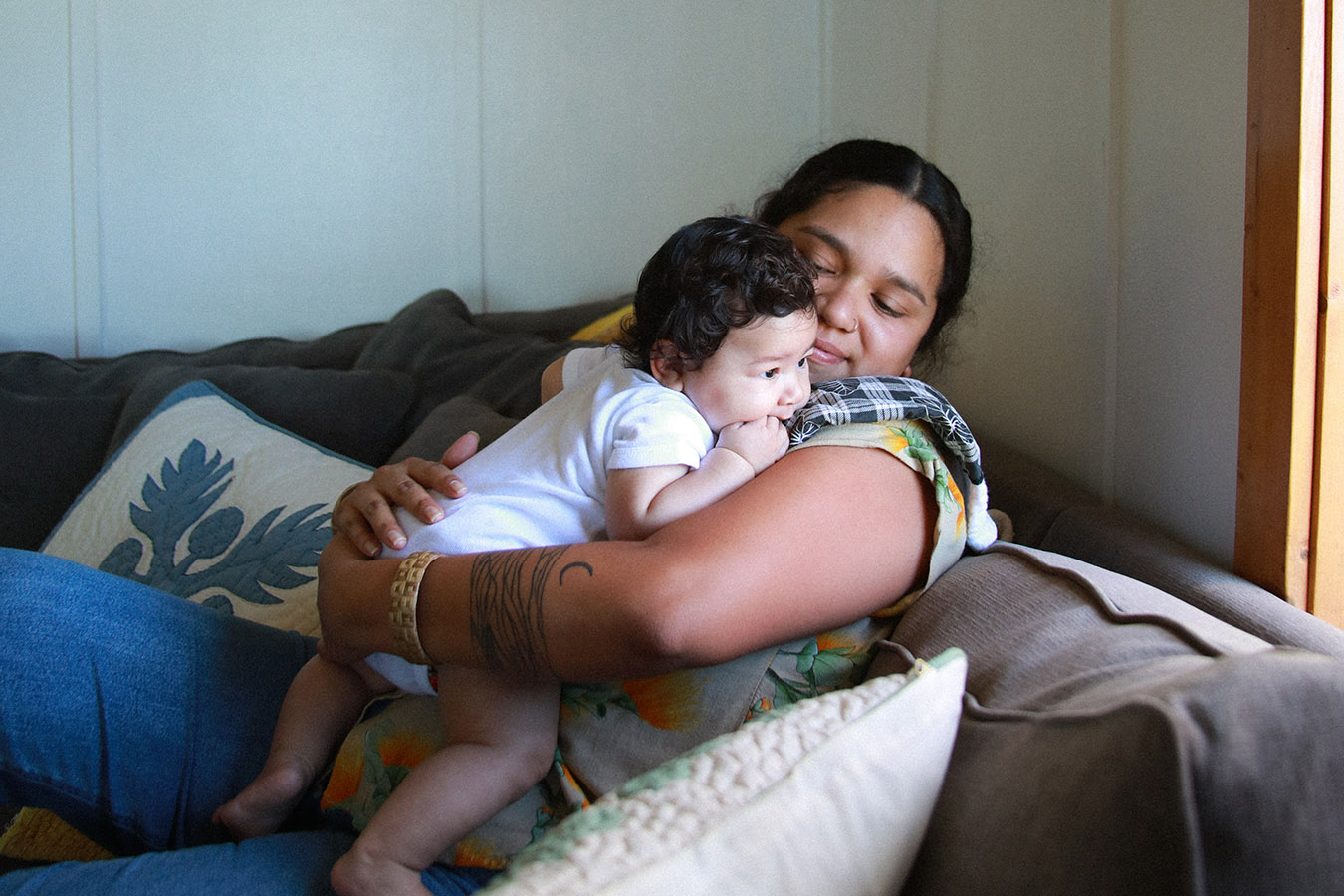
27-year old nonprofit coordinator
Spends 50% on rent
Resides in Paʻauilo, Hawaiʻi Island
Solis-Kalani lives with her partner and child in a one-bedroom house. “Thinking from a Hawaiian perspective, you can’t ‘own’ ‘āina, you steward ‘āina. But I do want something that I can cultivate and not have to worry about someone taking away from me,” she says. “I’m starting to dive into that now, looking at properties, looking at what we can afford and, now that I have a keiki, what I want to pass down to her. There is a dream [to own], but it seems like you have to find the right timing and you have to have the money. We’re trying to raise our family, but also trying to make money and trying to do all these things to eventually own a home. And it’s hard.” Her landlords, who are from California, are close associates of her employer and believe in the food resiliency work the nonprofit does. “They’re really good people that are part of that crowd that wants to give back to locals. So I kind of scored on having a home so close [to work] and it’s pretty affordable for this area. The hardest part to accept of all of it is that I lucked out having this house, and that shouldn’t be the case.”
Daniel Thompson and Jaysee Moore
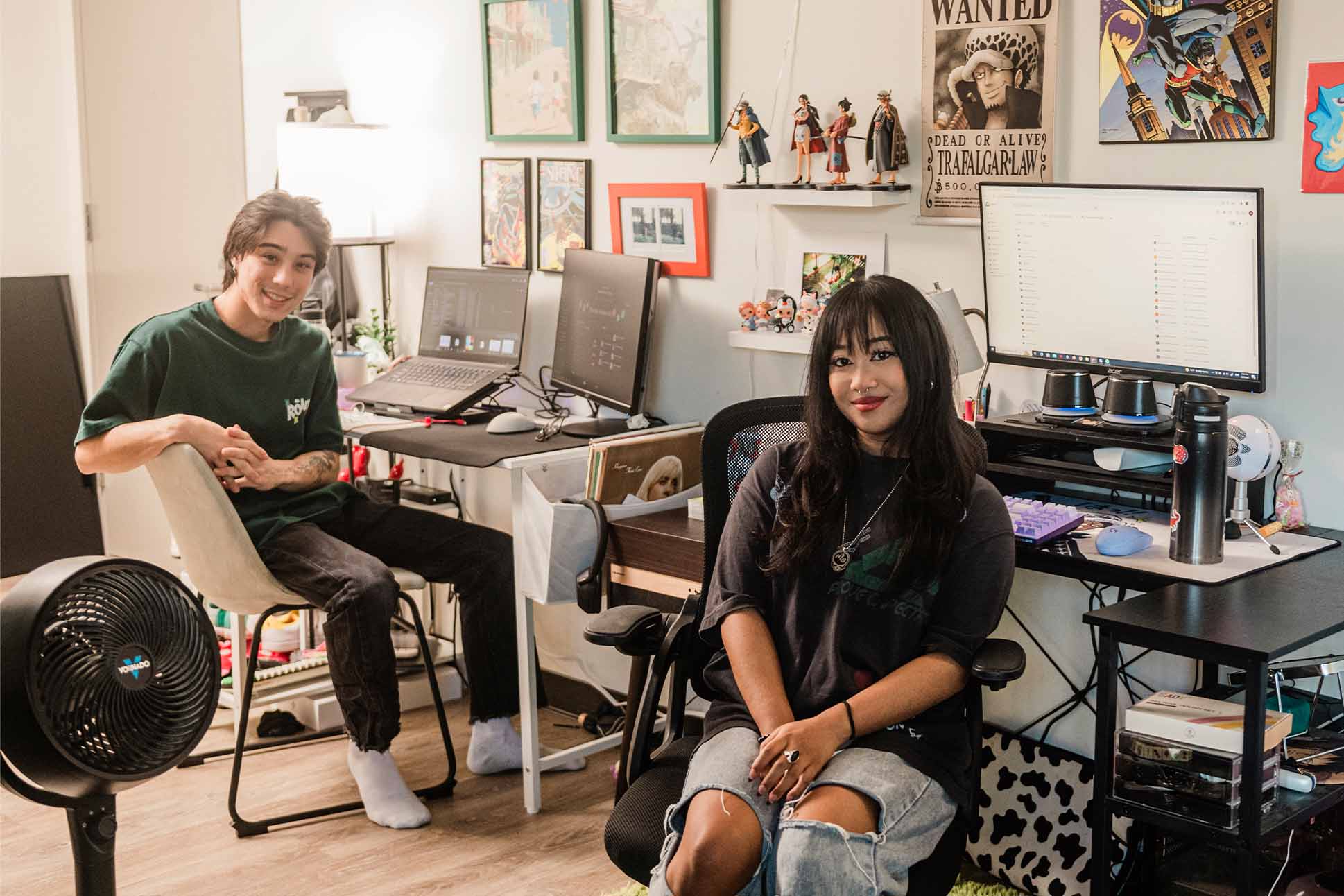
25-year old student and graphic designer
Spends 45% on rent
22-year old student and retail supervisor
Spends 40% on rent
Resides in in Kakaʻako, O‘ahu
Thompson and Moore share a studio apartment. “We are most likely never going to buy a home. I think at this point, having each other, our own place, a cat — that’s all we ever wanted,” Thompson says. “We are very fortunate that we are a healthy, happy couple. Getting our own place would not have been possible if we were not dating. I just don’t think within our generation it’s even possible to afford a home in Hawai‘i.” The couple are hopeful, however, about eventually moving abroad. Moore says, “One of our dreams and goals would be to possibly open a small coffee shop in Japan that is also a home.”
Leilanna and Joel Bilyeu


22-year-old stay-at-home mom
27-year-old window cleaner
Spends 50% on rent
Resides in Kapahi, Kaua‘i
The Bilyeus and their two infant girls live in a one-bedroom duplex. The home’s location — which is close to Leilanna’s mom and an easy commute for Joel’s job — along with its “best-we-could-find price” for the island’s east side, works for their family at the moment. But, “we’re obviously going to need more room eventually,” Leilanna says, referring to their kids as they grow. The married couple have even discussed moving out-of-state. “We’ve considered [moving elsewhere],” she says. “It’s been a serious topic, deciding whether or not to stay.” Joel admits trying to buy a place where he was born and raised is becoming a difficult thing to think is achievable. He hasn’t lost hope on the generation after him, though. “I think it’s possible to instill certain values in my children,” he says, “that could lead them to eventually purchasing a home here with more financial stability for themselves.”
Skyler Nakamura and Kelley Ho
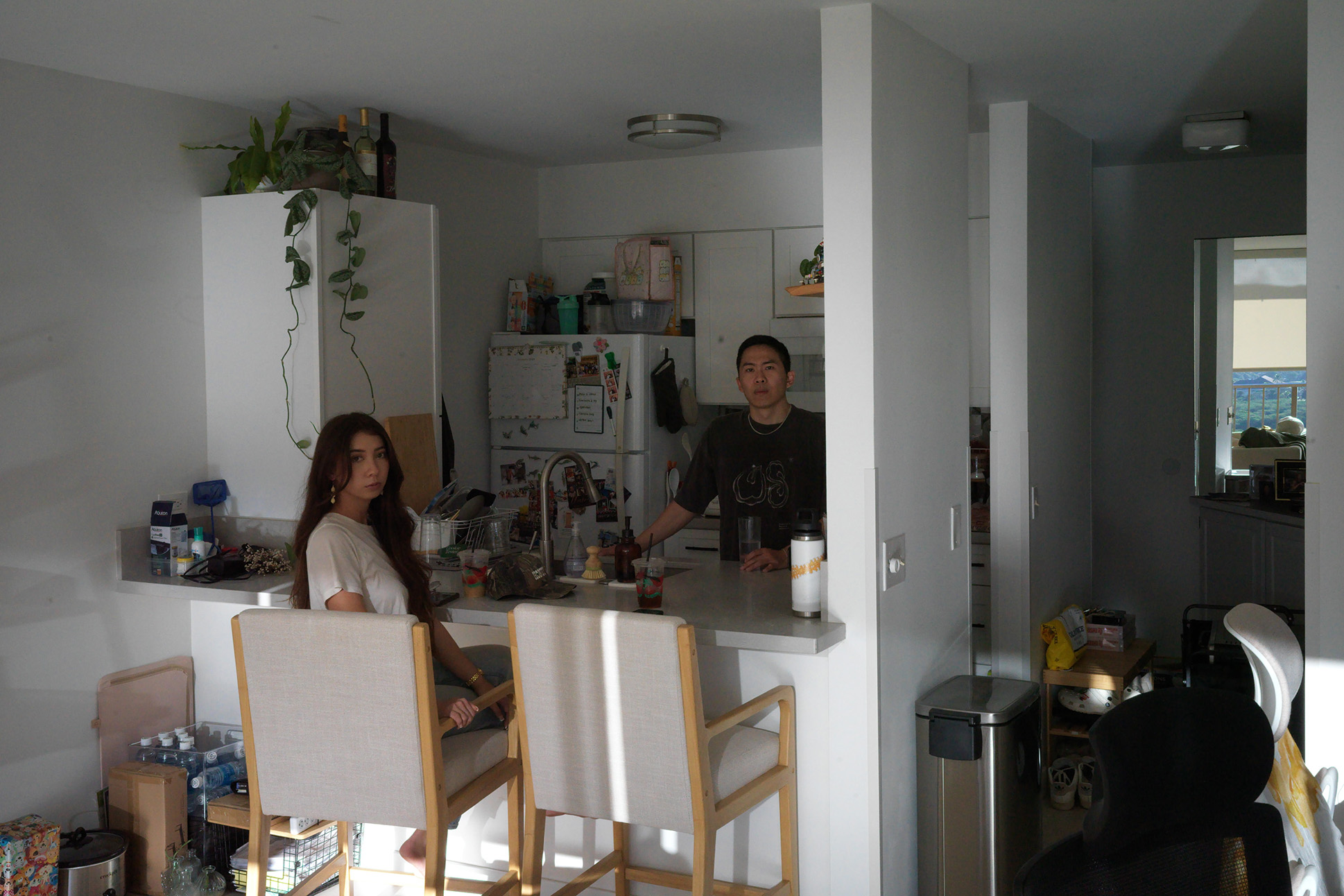
28-year old architectural designer
Spends 45% on rent
25-year old teacher
Spends 45% on rent
Resides in Mō‘ili‘ili, O‘ahu
Ho and Nakamura live in a one-bedroom condominium. Nakamura’s mom, who is also their landlord, rents the property to the couple. “I worry a lot more about the future because my mom kind of instilled, like, an old-school mentality in me of, ‘You need to buy a house. This is the way to succeed,’” Nakamura says. However, he finds that “near impossible” in Hawai‘i’s market, saying, “No one is able to afford [to buy] without a lot of luck or coming into money somehow.” Ho feels blessed to be renting from Nakamura’s family, but says they’re both worried that should they want to start a family, they’ll require more space. “I don’t know how to say this without being really blunt,” she says, “but, honestly, I feel like we’re never going to be able to buy a place until somebody dies. We can inherit, then use that. I mean, that’s the reason why my dad is holding on to his house. In the event that he passes, he wants us to be able to sell it, and then we can use it as a down payment.” Nakamura echoes that this is “the conversation that our parents have with us” in 2024, he says. “A little morbid, but the reality.”
Moananui Peleiholani-Blankenfeld
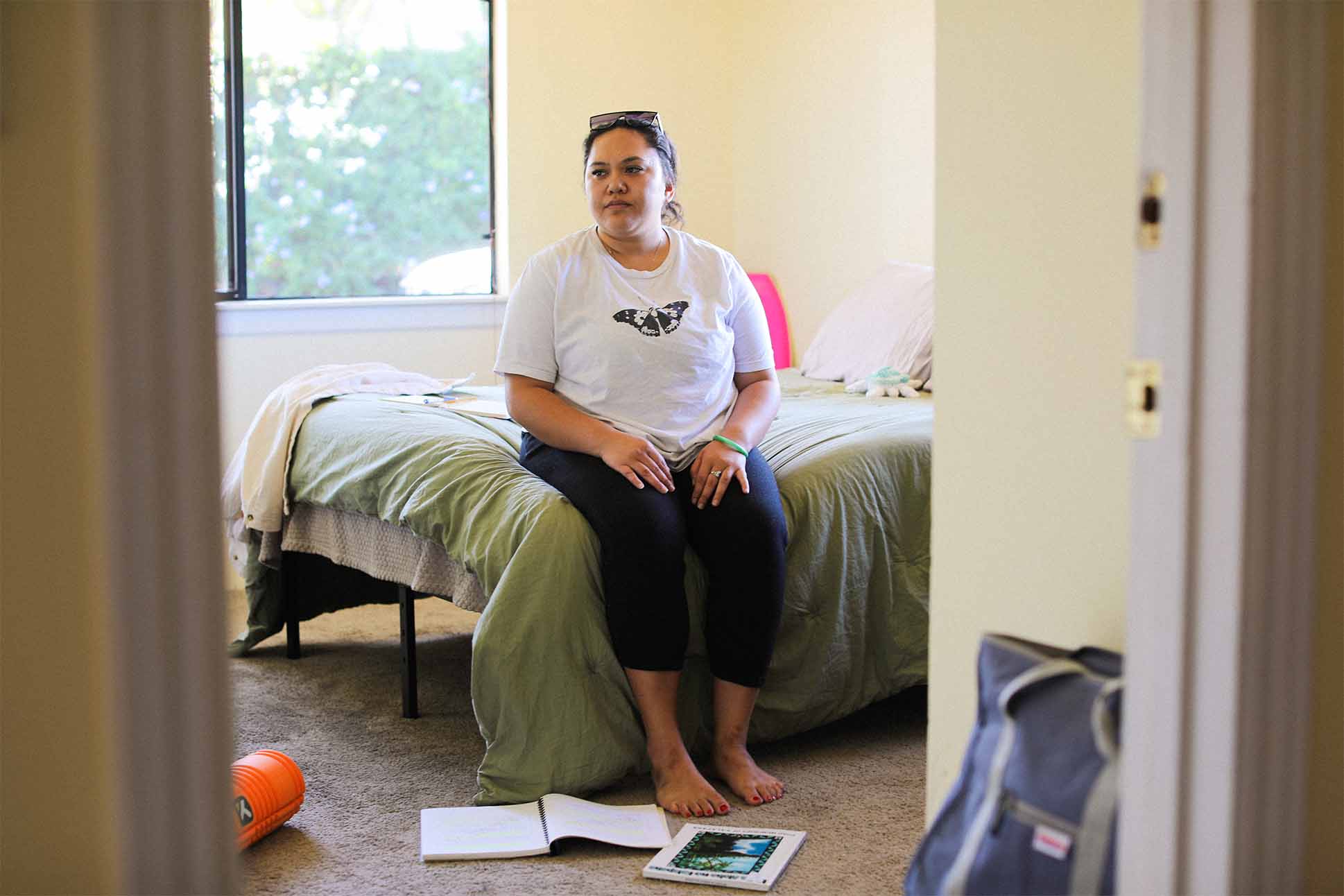
25-year-old nonprofit executive director
Spends 45% on rent
Resides in Wailuku, Maui
Peleiholani-Blankenfeld lives alone in a one-bedroom cottage. She describes it as “a branch off of the main house,” which is where the property owners dwell. While her rent is “kind of crazy expensive,” she feels lucky to have found a peaceful area to call home given how limited housing is on Maui. Peleiholani-Blankenfeld moved to Wailuku from Hilo for a better job opportunity. As a single woman on a new island, she prioritizes privacy and safety in her living situation and recognizes she may be taking a “big financial hit” to ensure both. “There’s a lot of things that I’ve had to sacrifice,” she says. “I don’t get to spend a lot of time with family or going out and doing fun things.” Even so, the recent college graduate is maintaining a positive outlook that the investment she made in her law school education will benefit her in her future homeownership goals. “I’m pretty hopeful and optimistic and I’ve been trying my best,” she says, “trying to save money to go toward my own place.” Her rental coexists with a few other separate units, whose residents she refers to as her “ʻāina-mates” since they share a common plot of land. Her landlord even granted her space for her own garden. “The land is very lush over here,” says Peleiholani-Blankenfeld, who looks forward to growing her own food sustainably and “to be able to not spend more money on groceries and just sustain myself at home.”
Aminah Giwah and Kyla Michelle
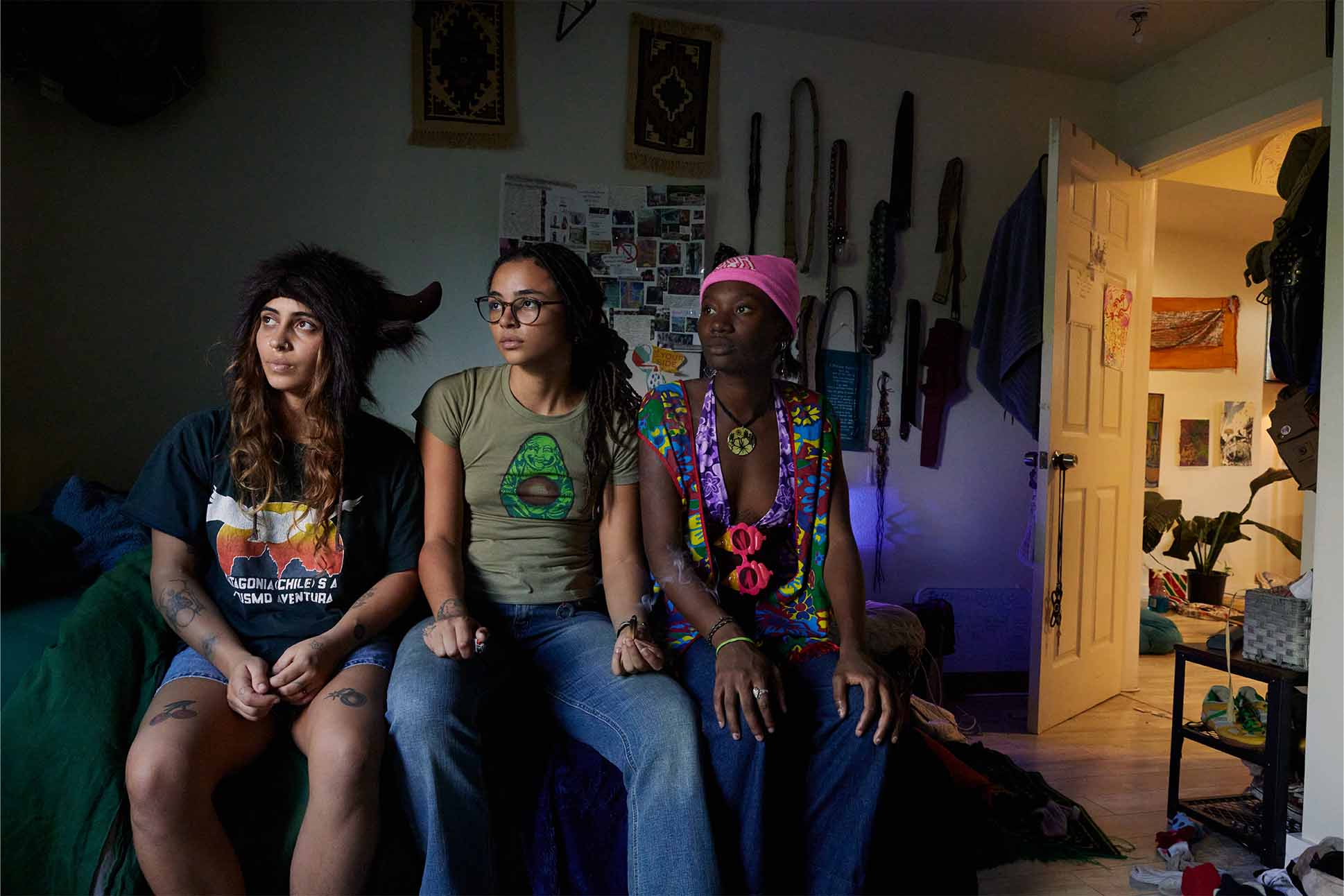
20-year-old yoga teacher (center)
Spends 0% on rent
21-year-old educator (right)
Spends 60% on rent
Resides in Kalihi, O‘ahu
Giwah and Michelle are close friends and roommates, who live in a two-bedroom duplex. “My current anxiety is that I’ll never be able to afford to financially support myself in this world,” says Giwah, who has family assistance for now to pay her rent. “And that goes for people in situations less fortunate than mine, so I’m just concerned about the housing situation in our society and where it’s going.” Michelle echoes that sentiment, saying, “Working at the middle school down the street has made me aware of the roots of the neighborhood and the people who’ve been living here for a very long time. My concerns include increasing prices for the working class and how people can’t afford to live on their own land anymore.”
Taylor Kaneakua
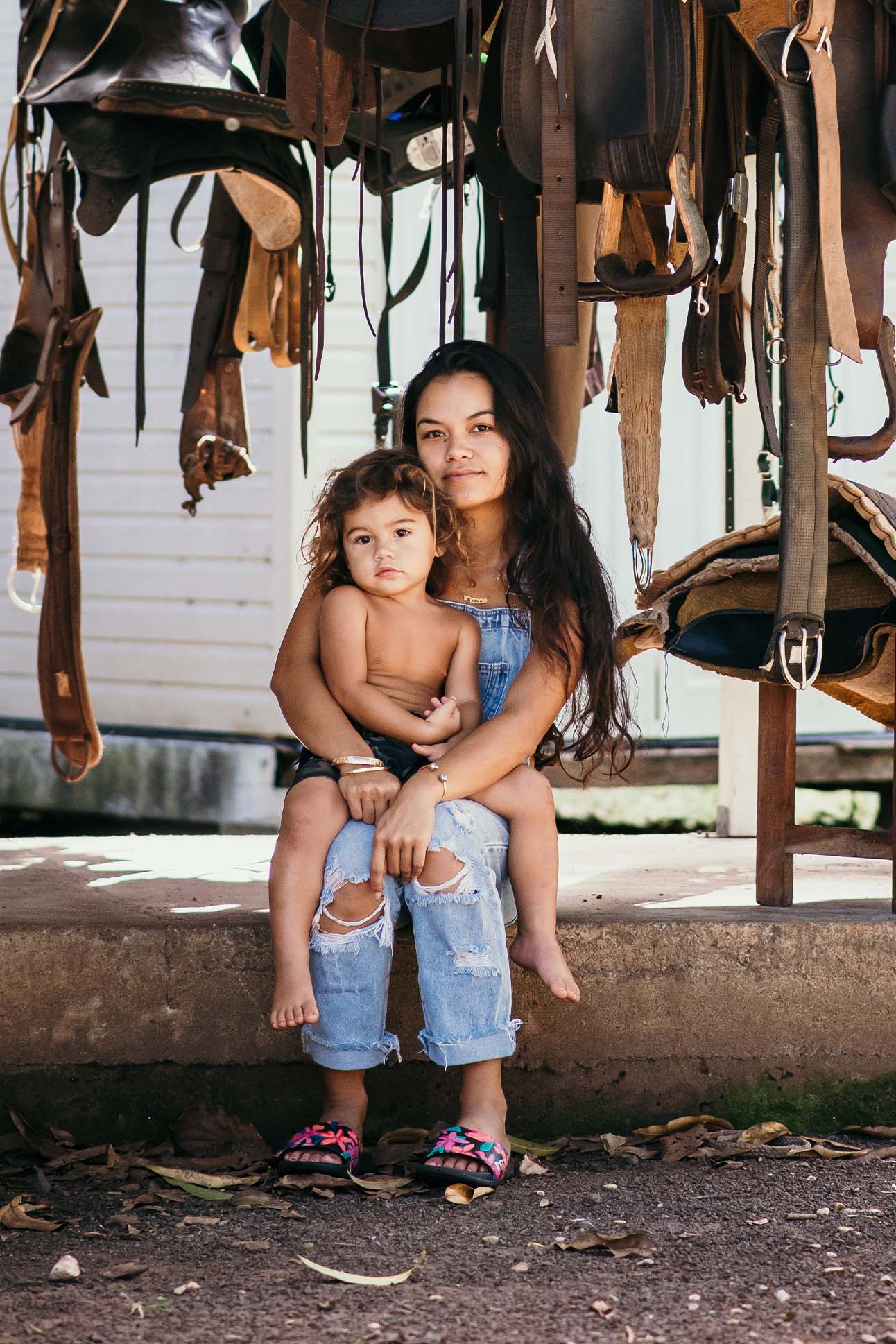
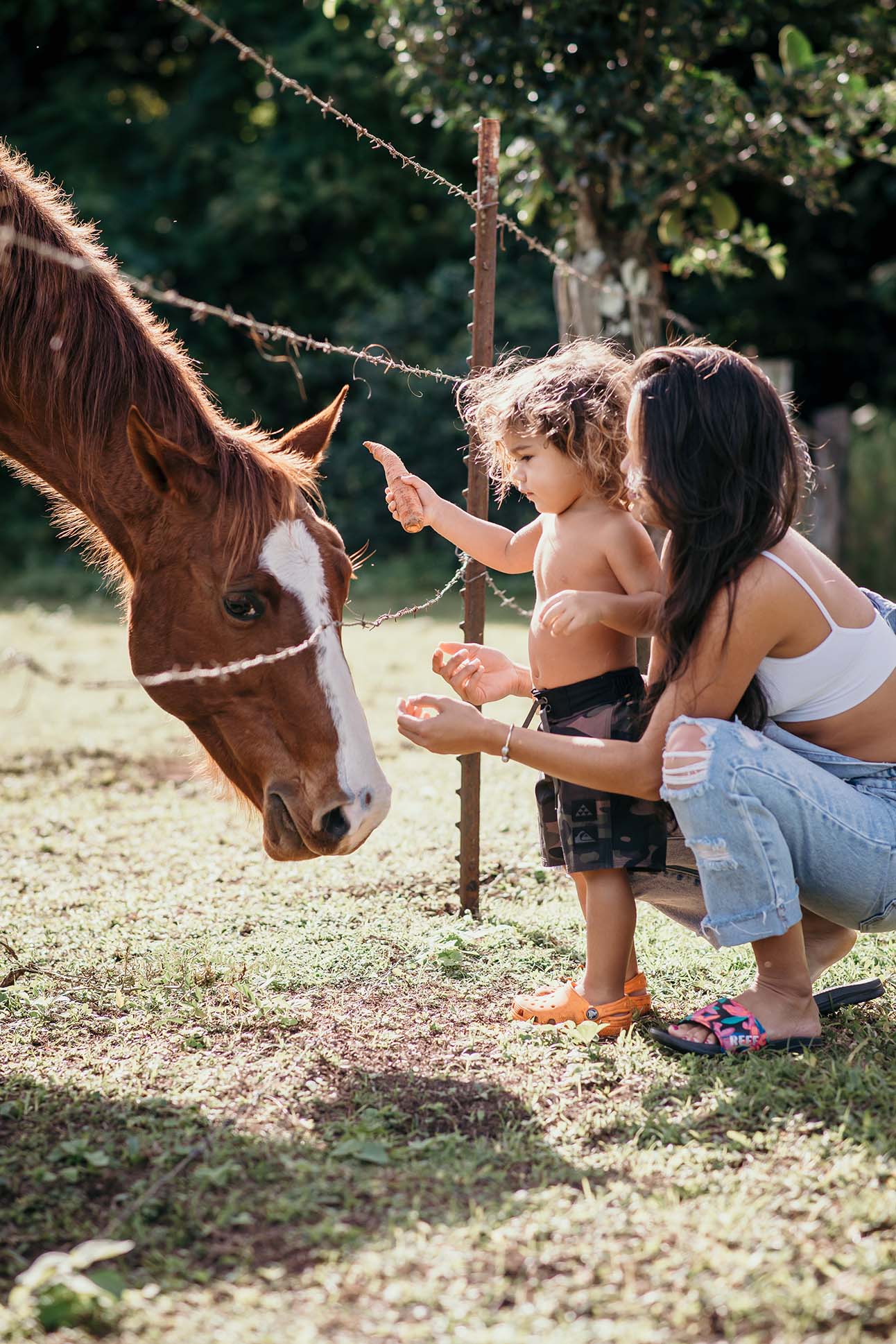
26-year-old vacation rental cleaner
Spends 35% on rent
Resides in Hā‘ena, Kaua‘i
Kaneakua lives with her boyfriend, Chance Olanolan, and their son, Kū‘au, in a single-studio accessory dwelling unit on his family’s property lot. They may be on Kaua‘i’s covetable north shore, but the small size of the unit, which is all her family can afford, “definitely takes a toll,” Kaneakua says. “You feel like you’re living right on your things.” Kaneakua says she and her boyfriend have decent incomes. “Enough to survive, but it’s not enough to save and survive, if that makes sense,” she says. Because of the lack of affordable housing, she also worries about the swiftly changing demographics of the character of the neighborhoods around her. She cites grocery store visits where recognizing folks from the area is more infrequent and elementary school classrooms where children born and raised on Kaua‘i are the minority. “There’s barely any locals, let alone Hawaiian people, down here that own a property,” she says. “I could probably name only five out of 300 houses here still owned or lived on by Hawaiian people. It’s becoming a town where you sadly don’t know everybody anymore.”
Naleoolokahi Faurot
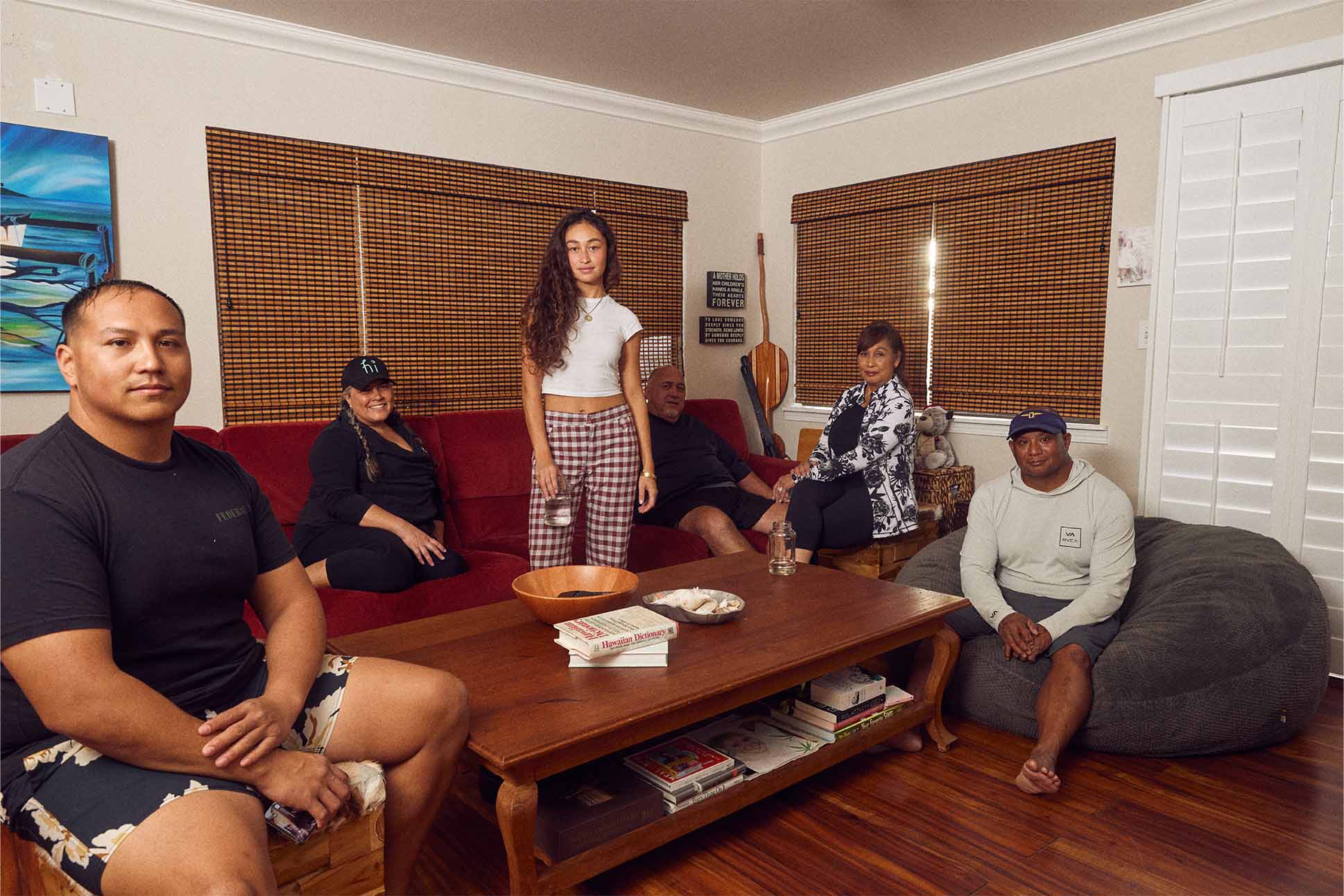
21-year-old student and model
Spends 0% on rent
Resides in Papakōlea, O‘ahu
Faurot lives with her boyfriend in his family’s three-bedroom, multigenerational homestead on Hawaiian Home Lands. Faurot, who grew up in ‘Ewa Beach, feels fortunate to now be living in a community centralized around her culture where there are “Hawaiians everywhere just living life as Hawaiians.” Both of her siblings, however, have moved to the U.S. continent where the cost of living is lower. “That’s one thing that I hate about the living situation, families being split up,” she says. Meanwhile, “you see so many houses where people barely even live in them, they’re just sitting there for a couple of months and it’s just, like, empty.” Faurot, who is part-Hawaiian, is enough to qualify to inherit a Hawaiian Home Lands lot, but not enough to apply for them on her own. “There should be more Hawaiian homes,” Faurot says. “It shouldn’t be a struggle for a Hawaiian to get a home in Hawai‘i.”

